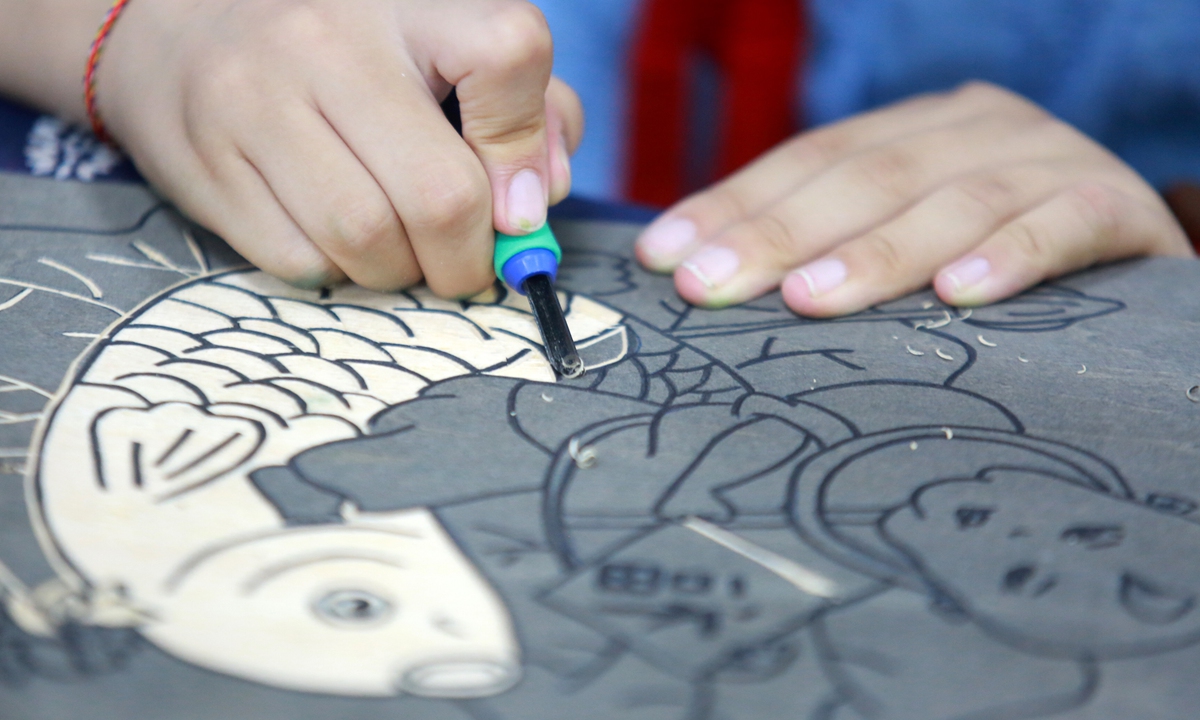
Children learn traditional woodblock printing skills in Yangzhou, Jiangsu Province. Photo: IC
Woodblock printing: An important invention for art and culture in ancient China Woodblock printing is an important ancient Chinese invention. This technique took a dominating position in the ancient printing industry. Despite the later invention of typography, it is still being used today.
The technique involves engraving text or images on a woodblock. The characters to be printed are written on a thin piece of paper which is stuck on the woodblock, and then the woodblock is engraved accordingly. A brush is then used to spread ink on the woodblock, and a piece of white paper is put on it, transferring the ink to the paper and completing a page.
Woodblock printing first appeared during the Tang Dynasty (618-907) and was widely used in the ninth century. The earliest known woodblock text was the Diamond Sutra, which is the only Tang Dynasty work preserved till now. It is composed of seven pieces of paper on a scroll 488 centimeters in length. It was printed with a thick and even layer of ink which created clear and vivid text and images, representing a high level of craftsmanship.
The period from 960 to 1279 saw a leap in development for China's printing industry. Thanks to more mature techniques, the amount of printed works surged. Printed books included the canons of Buddhism, Taoism, Confucianism as well as other philosophical schools. During the Song Dynasty (960-1279), the printing industry flourished with the rise of both official and private printing houses. More than 700 kinds of books were printed during this time. They were known for their neat typeface and simple style characters printed using good quality ink and paper. The masterpiece of the time was the printing of the Tripitaka. Comprising 1,076 sections over 5,048 volumes, this work was engraved on 130,000 woodblocks over the course of 22 years. It is the largest book in the early history of printing. Besides Buddhist scriptures, all kinds of ancient classics were included.
In the Yuan (1279-1368), Ming (1368-1644) and Qing (1644-1911) dynasties, woodblock printing was conducted not only in government offices, but also in academies, workshops and among families, with the engraved content encompassing classics of philosophers, historical records, religious canons and poetry.
Today woodblock printing techniques are still preserved in Yangzhou, East China's Jiangsu Province. In 2006, it was listed among the first batch of China's national intangible cultural heritage.
URL: https://www.seeglobalnews.com/read-943.html